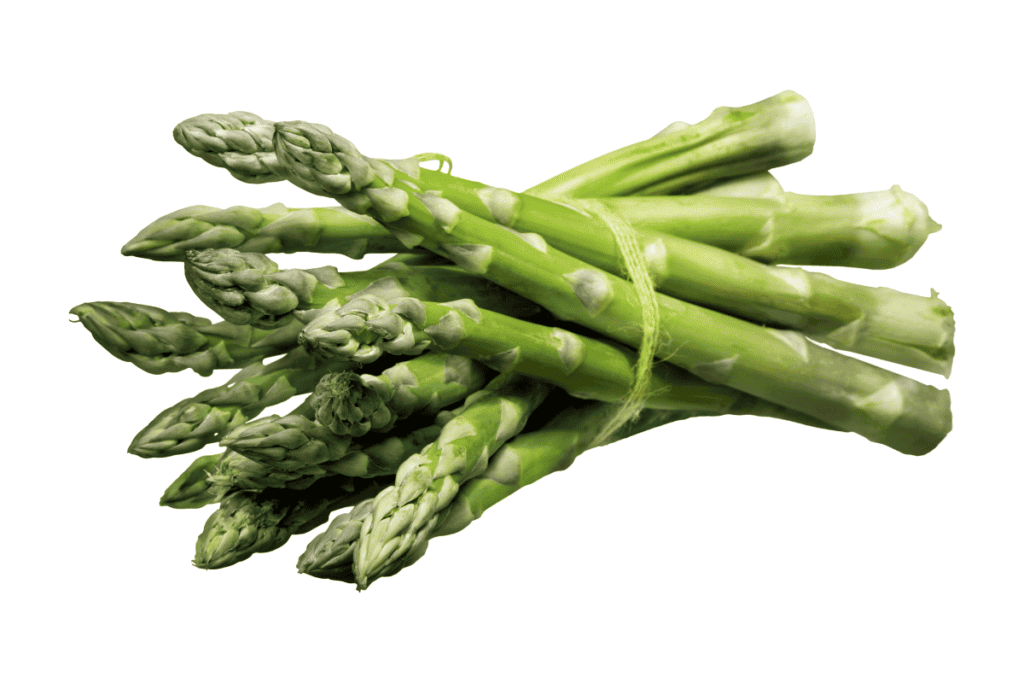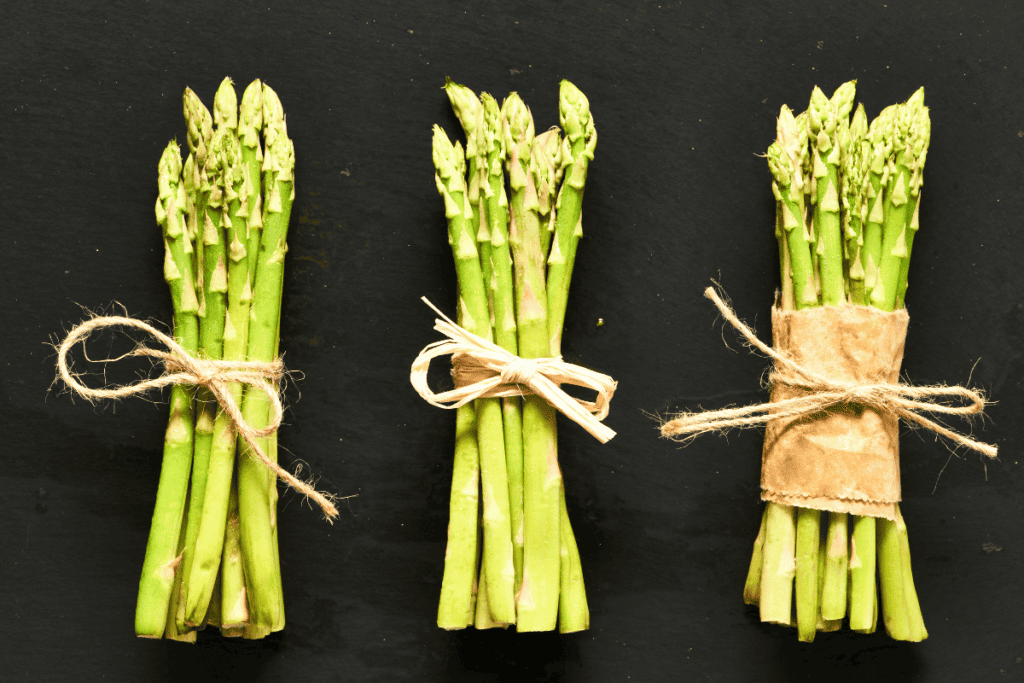If you’re a gardening enthusiast craving the delightful taste of homegrown asparagus, you’re in for a treat! Growing asparagus indoors allows you to enjoy this succulent vegetable year-round, right from the comfort of your home. Follow this comprehensive guide to turn your indoor space into a thriving asparagus haven.
I. Selecting the Right Asparagus
Variety

Choose a variety of asparagus suitable for indoor cultivation. Compact and container-friendly varieties, such as ‘Mary Washington’ or ‘Purple Passion,’ work well for limited indoor spaces.
II. Gathering Supplies
- Containers:
- Select deep containers with drainage holes to accommodate asparagus roots.
- Potting Mix:
- Choose a well-draining potting mix rich in organic matter.
- Seeds or Crowns:
- Decide whether you want to start from seeds or use asparagus crowns.
III. Starting from Seeds
- Germination Process:
- Start seeds indoors 8-12 weeks before the last frost date.
- Plant seeds 1/4 inch deep in seed trays.
- Optimal Conditions:
- Maintain a warm temperature (around 70°F) for successful germination.
- Keep the soil consistently moist but not waterlogged.
- Transplanting Seedlings:
- Transplant seedlings to individual pots once they develop a couple of true leaves.
IV. Starting from Crowns
- Choosing Crowns:
- Select healthy asparagus crowns for indoor planting.
- Preparing Containers:
- Fill containers with potting mix and plant crowns at a depth of 6-8 inches.
V. Providing Ideal Growing Conditions
- Sunlight:
- Place containers in a location that receives at least 8 hours of sunlight daily.
- Temperature:
- Maintain a consistent indoor temperature between 65-75°F.
- Humidity:
- Asparagus thrives in moderately humid conditions; consider using a humidity tray.
VI. Watering and Feeding

- Watering:
- Keep the soil consistently moist, but avoid waterlogging.
- Water thoroughly when the top inch of soil feels dry.
- Fertilizing:
- Feed with a balanced fertilizer during the growing season.
VII. Supporting Asparagus Growth
- Staking:
- As asparagus grows, provide support with stakes to prevent bending.
- Thinning:
- Thin out weaker shoots to allow stronger ones to flourish.
VIII. Harvesting Indoor Asparagus
- Patience is Key:
- Indoor asparagus may take longer to mature.
- Harvest sparingly in the second year to ensure continued growth.
- Cutting Technique:
- Cut spears just above the soil level when they reach 6-8 inches.
IX. Dealing with Common Issues
- Pests:
- Keep an eye out for pests like aphids and caterpillars.
- Use natural remedies or insecticidal soap if needed.
- Diseases:
- Ensure good air circulation to prevent fungal diseases.
X. Enjoying Your Indoor Asparagus Harvest
- Culinary Delights:
- Explore various recipes and savor the unique taste of your homegrown asparagus.
- Sharing the Bounty:
- Consider sharing the excess harvest with friends and family.
XI. FAQs About Growing Asparagus Indoors
Can I grow asparagus indoors all year round?
While it’s technically possible to grow asparagus indoors throughout the year, it’s essential to mimic the plant’s natural growing conditions. Asparagus requires a dormant period during winter to thrive. To achieve year-round cultivation, consider providing a cold period by placing the plant in a cool location for a few weeks during the winter. Additionally, maintaining a consistent temperature, proper soil conditions, and adequate care are crucial for successful year-round indoor cultivation.
How long does it take for indoor asparagus to mature?
The time it takes for indoor asparagus to mature varies depending on several factors, including the variety of asparagus, growing conditions, and care practices. On average, indoor-grown asparagus can take about 2 to 3 years to reach maturity and produce a substantial harvest. It’s important to be patient and provide the necessary care, including proper watering, fertilization, and suitable growing conditions, to ensure healthy and productive asparagus plants.
Do I need to grow lights for indoor asparagus?
Yes, providing adequate light is crucial for successful indoor asparagus cultivation. Asparagus plants require a minimum of 8 hours of direct sunlight daily. If natural sunlight is insufficient, supplement it with artificial grow lights. Use full-spectrum lights placed at an appropriate distance above the plants to simulate natural sunlight. This ensures that the asparagus receives the necessary light for photosynthesis and healthy growth
Can I start growing asparagus indoors at any time of the year?
Ideally, it is recommended to start growing asparagus indoors in late winter or early spring. This allows the plant to establish its roots and develop before being transplanted outdoors in the following growing season. Starting asparagus indoors during the colder months provides a head start and increases the chances of a successful harvest. However, with proper care and adjustments to growing conditions, you can initiate indoor asparagus cultivation at other times of the year.
What are the common challenges in growing asparagus indoors?
Growing asparagus indoors presents certain challenges, including:
Space Requirements: Asparagus requires space to spread its roots, so providing adequate container size is crucial.
Dormant Period: Mimicking the winter dormant period can be challenging indoors. Some strategies, like adjusting temperatures, are necessary for successful cultivation.
Lighting: Insufficient light can lead to leggy and weak plants. It’s important to ensure proper lighting conditions using natural sunlight or grow lights.
Patience: Asparagus takes time to mature, and impatience may lead to premature harvesting, reducing overall yield.
Pests and Diseases: Indoor plants are still susceptible to pests and diseases. Regular monitoring and appropriate pest control measures are essential to prevent infestations.
Conclusion Growing Asparagus Indoors
Growing asparagus indoors is a rewarding endeavor that brings the freshness of homegrown produce right into your kitchen. With a bit of patience and care, you’ll soon be relishing the unique flavor of your very own indoor asparagus harvest.
Latest Posts
- What Types of Lettuces Can You Grow?

- How to Plant Onion Seeds for Maximum Germination

- How to Plant Parsnip Seeds for Maximum Germination

- How to Plant Mushroom Seeds for Maximum Germination

- How to Plant Lettuce Seeds for Maximum Germination

- How to Plant Kale Seeds: A Step-by-Step Guide to Maximum Germination Success!





